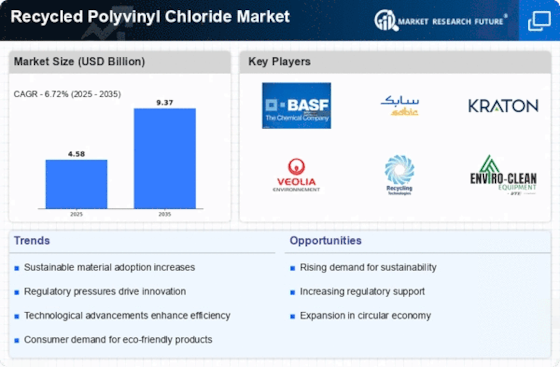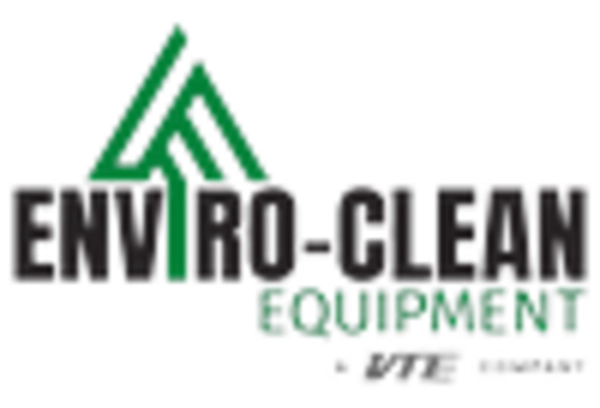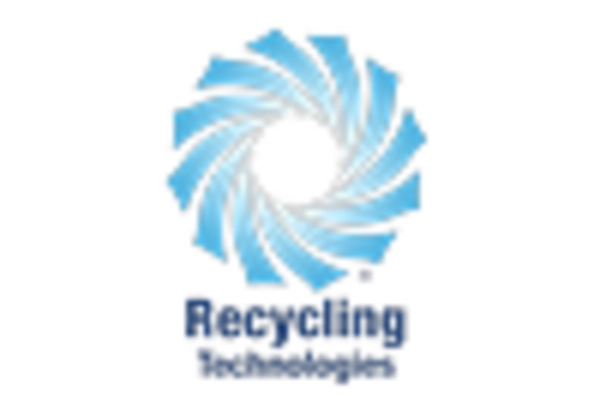Regulatory Frameworks Promoting Recycling
The Recycled Polyvinyl Chloride Market benefits from an evolving regulatory landscape that increasingly supports recycling initiatives. Governments are implementing stricter regulations aimed at reducing plastic waste and promoting the use of recycled materials. For example, several regions have introduced mandates requiring a certain percentage of recycled content in products, which directly impacts the demand for recycled PVC. This regulatory push is expected to create a favorable environment for the growth of the recycled PVC market, as manufacturers strive to comply with these requirements while also appealing to eco-conscious consumers.
Increasing Demand for Sustainable Materials
The Recycled Polyvinyl Chloride Market is experiencing a notable surge in demand for sustainable materials. As consumers and businesses alike become more environmentally conscious, the preference for recycled materials over virgin alternatives is growing. This shift is driven by a collective effort to reduce plastic waste and promote circular economy principles. In 2025, the market for recycled PVC is projected to reach approximately 1.5 million tons, reflecting a compound annual growth rate of around 5 percent. This trend indicates a robust market potential for recycled PVC, as industries such as construction and automotive increasingly seek sustainable solutions to meet their environmental goals.
Technological Innovations in Recycling Processes
Technological advancements play a pivotal role in enhancing the efficiency of recycling processes within the Recycled Polyvinyl Chloride Market. Innovations such as advanced sorting technologies and chemical recycling methods are improving the quality and yield of recycled PVC. These developments not only increase the volume of recycled materials available but also enhance their applicability across various sectors. For instance, the introduction of new purification techniques has led to a significant reduction in contaminants, making recycled PVC more competitive with virgin materials. As a result, the market is likely to witness a rise in adoption rates, further driving growth.
Growing Construction Sector and Infrastructure Development
The Recycled Polyvinyl Chloride Market is significantly influenced by the expansion of the construction sector and ongoing infrastructure development projects. As urbanization accelerates, the demand for building materials, including recycled PVC, is on the rise. In 2025, the construction industry is anticipated to account for a substantial share of the recycled PVC market, driven by the need for sustainable building practices. The use of recycled materials in construction not only reduces environmental impact but also offers cost advantages, making it an attractive option for developers and contractors alike.
Consumer Awareness and Preference for Eco-Friendly Products
Consumer awareness regarding environmental issues is reshaping purchasing behaviors, thereby impacting the Recycled Polyvinyl Chloride Market. As individuals become more informed about the benefits of using recycled materials, there is a growing preference for products that incorporate recycled PVC. This trend is particularly evident in sectors such as packaging and consumer goods, where brands are increasingly marketing their use of sustainable materials. The shift in consumer preferences is likely to drive demand for recycled PVC, as companies strive to align their offerings with the values of environmentally conscious consumers.

















Leave a Comment